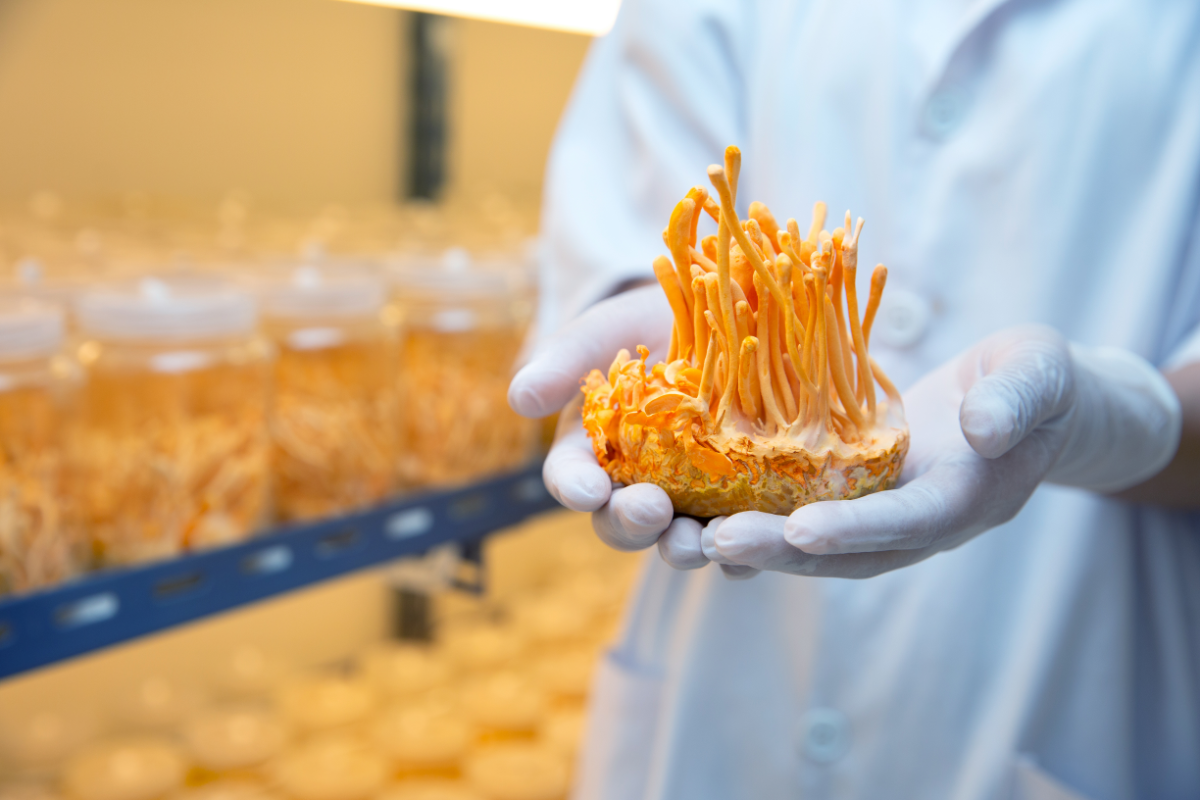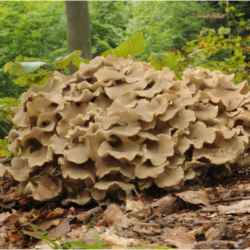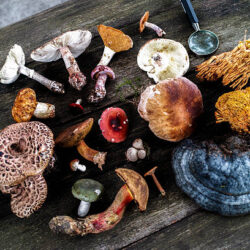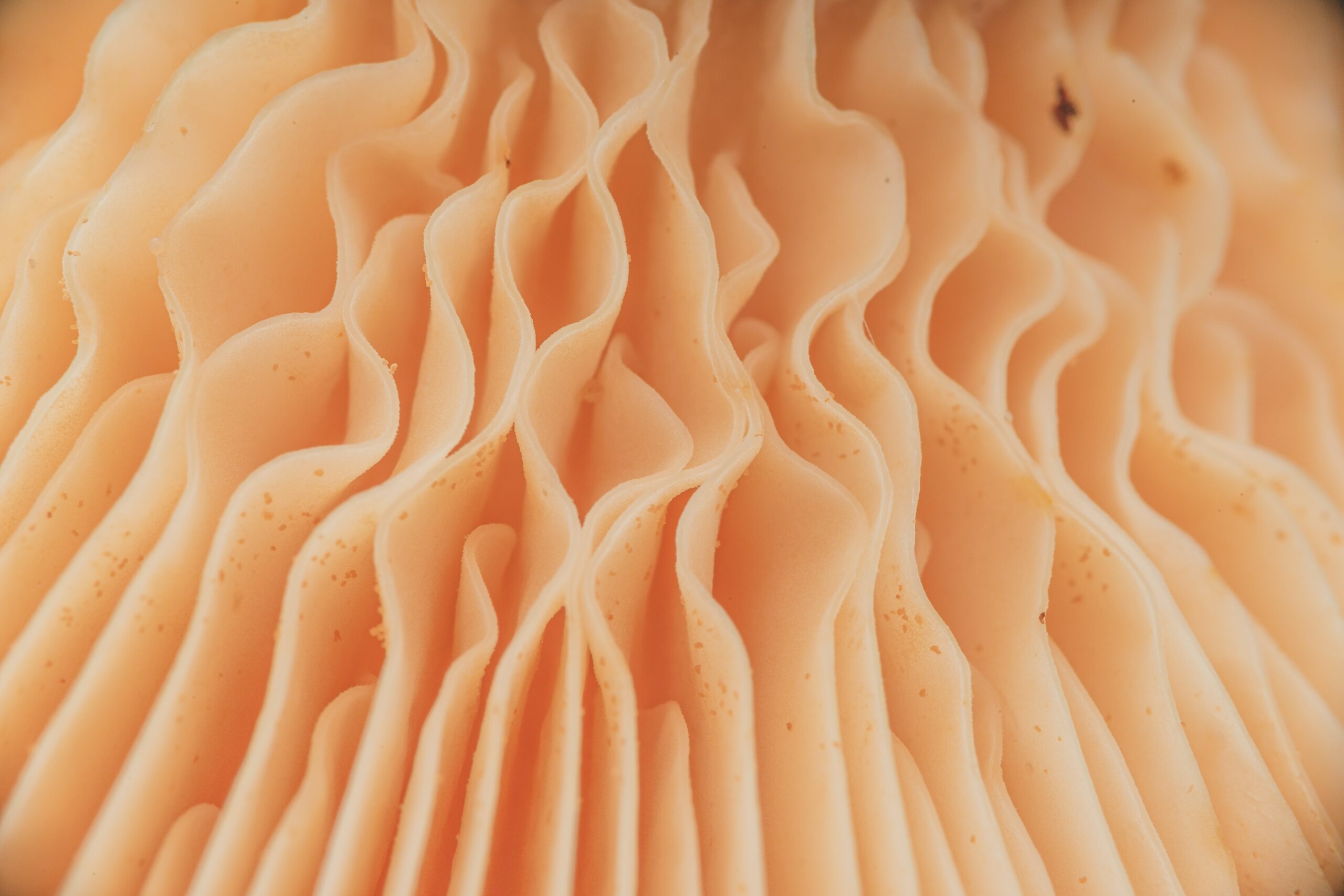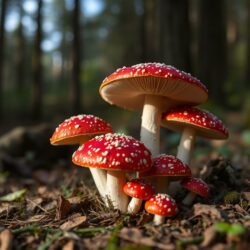Cordyceps, a treasure trove of traditional Asian medicine, is one of the most popular and fascinating natural remedies. Also known as Cordyceps sinensis and nicknamed “winter insect, summer herb” because of its unique life cycle, this fungus develops by parasitising insects. Its rarity and exceptional properties make it a highly sought-after product, particularly among the nomadic shepherds of Tibet, who regard it as a treasure. Renowned for its many health benefits, Cordyceps is particularly well known for improving fertility, boosting immunity, combating fatigue and supporting renal and respiratory health. Its nutrient-rich composition, including beta-glucans, cordycepic acid, ergosterol, essential amino acids and various vitamins and minerals, gives this mushroom remarkable medicinal properties. (1)
What is Cordyceps?
Cordyceps, with its long, wiry shoots and bright orange colour, looks like an insect and a plant fused together. Its unique structure is the result of its parasitic lifestyle, in which it develops on insect larvae.
Cordyceps is a genus of parasitic fungi with around 750 identified species, found in many parts of the world, including South Asia, Europe and North America (2). This rare fungus is found mainly in the humid mountainous regions of the Himalayas, at altitudes of over 3,000 metres, where the climatic and environmental conditions favour its unique development. These species are highly prized and widely used as food and medicine for the treatment of various ailments. (3)
Among these species, Cordyceps sinensis and Cordyceps militaris are the best known and belong to the Clavicipitaceae family. They have been used for centuries in traditional Chinese medicine for their remarkable chemical and pharmacological properties. These mushrooms are particularly renowned for their chemical constituents such as cordycepin, a compound that contributes to their varied pharmacological action, including their use as traditional medicinal materials. (4)
Cordyceps militaris is known to be a potential reservoir of biometabolites for herbal medicines, and evidence of its applications in revitalising various body systems has been available since ancient times. It is considered to be one of the oldest sources of certain useful chemical compounds.
The Cordyceps genus includes many species of fungi, most of which are endoparasitoids on arthropods. Their distribution is cosmopolitan, but they are particularly present in Asian regions with a hot, humid climate. These pathogens of insect pests are good candidates for use as biological control factors.
Cordyceps develops by infecting insects and other arthropods this fascinating life cycle contributes to its mystique and aura as a natural remedy with exceptional properties. This ability to parasitise other organisms is one of the reasons why Cordyceps is considered a leading medicinal mushroom, used in a variety of treatments and remedies over the centuries.
History and tradition
Cordyceps has long been recognised in traditional Chinese and Tibetan medicine, and is famous for its energising and revitalising properties. The historical texts of these cultures bear witness to its use to boost vitality and promote longevity, a practice that continues to this day. Cordyceps is valued as both a food and a medicine, used to treat a variety of ailments.
A historical and cultural heritage
Cordyceps has been used for over 2,000 years, initially reserved for royalty and the elite. It was prized for its tonic properties, as ancient Chinese and Tibetan medical texts reveal.
The phytochemical richness of Cordyceps
The phytochemical diversity of the Cordyceps genus is impressive, with over 200 metabolites identified, including nucleosides, steroids, cyclic peptides, flavonoids and many others. Thirty-five species are recognised for their medicinal properties or the presence of bioactive compounds. Cordyceps sinensis is particularly notable as the species most frequently used and studied.
Scientific studies confirm its benefits
In vitro and in vivo research has confirmed several medicinal properties of Cordyceps. Compounds such as cyclodepsipeptides, nucleosides and polysaccharides demonstrate immunomodulatory, antioxidant, anti-tumour, anti-inflammatory and other activities. These discoveries underline the potential of Cordyceps in the treatment of various disorders and the discovery of new drugs.
Composition and nutrients
Cordyceps is distinguished by its richness in essential nutrients. It contains a wide range of amino acids and vitamins, including B1, B2, B12 and K. The mushroom is also a varied source of carbohydrates, including monosaccharides, oligosaccharides and polysaccharides. Its protein content is particularly notable, representing around 59.8% of its macro-nutritional composition, while lipids and carbohydrates make up 8.8% and 29.1% respectively.
Medicinal compounds in Cordyceps
From a medicinal point of view, Cordyceps contains key elements such as polysaccharides, proteins, sterols, nucleosides and various trace elements. These include cordycepic acid, adenosine, exo-polysaccharides and various vitamins and enzymes. Cordycepin, or 3′-deoxyadenosine, found mainly in the ascomycete fungus C. militaris, is a major active constituent, renowned for its wide range of biological activities.
Amino acids and fatty acids in Cordyceps
The fruiting body of Cordyceps is rich in essential amino acids such as lysine, glutamic acid, proline and threonine. It also contains an abundance of unsaturated fatty acids, such as linoleic acid, which make up around 70% of total fatty acids. Notably, there are differences in the concentrations of adenosine and cordycepin between the fruiting body and the mycelium of the mushroom.
The many health benefits of Cordyceps
These bioactive components of Cordyceps are widely recognised for their many health benefits. They help to improve immune function, reduce fatigue, and offer benefits for heart and kidney health. Cordyceps’ rich nutrient content makes it a valuable source for those looking to enrich their diet with natural health-promoting compounds.
Health benefits
Cordyceps, often referred to as the ‘super mushroom’, has a special place in the pharmacopoeia of traditional Asian medicine. Its fame has now spread to the West, where modern science is beginning to reveal the potential of its many health benefits. From improving physical performance and regulating the immune system, to its antioxidant and anti-inflammatory properties and its support for heart and respiratory health, Cordyceps offers an impressive range of benefits that are attracting the interest of both the scientific community and health-conscious consumers. Let’s find out how this age-old mushroom continues to revolutionise our approach to natural health. (5)
What are the benefits of Cordyceps?
- Improved Physical Performance: Cordyceps has been shown to improve physical performance thanks to its anti-inflammatory properties, which can reduce inflammation caused by exercise. One study showed a significant improvement in VO2 max in individuals after consuming Cordyceps, indicating better oxygen utilisation during exercise.
- Effects on the immune system: Cordycepin, a bioactive component of Cordyceps, helps to combat inflammation linked to various illnesses such as asthma, rheumatoid arthritis and hepatitis, thereby helping to strengthen the immune system.
- Antioxidant and anti-inflammatory properties: The polysaccharides and cordycepin present in Cordyceps have beneficial effects on obesity, often associated with chronic low-grade inflammation, and may help combat oxidative stress and inflammation.
- Impact on Respiratory Health: Cordyceps is used to improve respiratory function and treat respiratory problems such as asthma and bronchitis, thanks to its anti-inflammatory properties.
- Support for heart health: It can regulate blood sugar levels and improve insulin resistance, factors which are beneficial for heart health. It also helps to manage dyslipidaemia, a condition characterised by high levels of cholesterol or fats in the blood.
- Anti-ageing properties: Cordyceps is used in traditional Chinese medicine to provide energy, reduce fatigue and increase libido. It is often combined with ginseng and Rhodiola rosea to reduce fatigue. Cordycepin may help regulate energy metabolism.
- Anti-cancer effects: Research suggests that Cordyceps has anti-cancer activity, particularly against breast cancer, and could be a good candidate for cancer immunotherapy. It is also used in China as a food therapy for lung cancer sufferers.
Use and dosage
Cordyceps is available in several forms, including powder, capsules and liquid extracts. When it comes to dosage, there is no clear consensus on the precise amount to consume, as this can vary depending on the form of the product and the purpose of the treatment.
Suggested dosage :
- For the treatment of liver disease: 3-5g per day.
- For the treatment of cancer patients: 3-5g per day. (7)
In animal studies, doses of 150 to 300 mg/kg of hot water extract of Cordyceps Sinensis mycelium were tested, showing an increase in fatigue resistance in rats. Similarly, consumption of 150 mg/kg of this extract reduced biochemical markers of stress in rats. (6)
For daily use, a moderate dose of 2g (2000mg) is recommended by some experts. Some suggest doubling the dose during the first two weeks to allow the body to establish its beneficial profile more quickly.
How should Cordyceps be taken?
It is essential to start with a lower dose, monitor reactions and adjust the dose if necessary. As with any dietary supplement, it is advisable to consult a health professional before starting a treatment with Cordyceps, particularly if you have any particular medical conditions or are taking any medication.
To illustrate a practical application of these recommendations, let’s take a look at the product Mico Cord. This dietary supplement based on pure Cordyceps extract and enriched with vitamin C comes in capsule form. Each capsule contains a standardised extract of Cordyceps, guaranteeing a high concentration of active ingredients. The recommended dosage is 1 to 2 capsules a day, preferably in the morning, with a recommended follow-up period of at least 60 days. Mico Cord is just one example of the many products available, reminding us of the importance of choosing quality supplements and consulting a healthcare professional for use tailored to your specific needs.
Comparison table of Cordyceps-based mycotherapy remedies
| Product name | Type | Full description |
|---|---|---|
| Mico-Cord | Capsules | Pure Cordyceps sinensis, known for its benefits on energy, vitality and immune support. |
| Mico-PNE | Doses | Concentrated formula for integrative nutritional support. |
| Mico-Onco | Doses | Nutritional support for oncology patients, with a combination of medicinal mushrooms. |
| Hifas Equilibrum | Capsules | A supplement for balancing body and mind, combining various mushrooms and plants. |
| Mico-Repair Serum | Serum 100 ml | Skin care enriched with mushroom extracts, for revitalised, hydrated skin. |
| Cordy-Sin Sport | Capsules | Cordyceps sinensis specially formulated for athletes to improve endurance and recovery. |
Precautions and side effects
Although Cordyceps is generally considered safe for most adults when taken in the recommended doses, it does require a few precautions and may cause side effects in some people.
- Drug Interactions: Cordyceps may interact with immunosuppressive drugs, which could be a concern for people with weakened immune systems or after organ transplants.
- Side Effects: Reported side effects of Cordyceps are rare, but may include dry mouth, rash, drowsiness, nausea and diarrhoea. These effects are generally mild and reversible when the supplement is stopped.
- Precautions for pregnant and breast-feeding women: As with many supplements, the use of Cordyceps is not recommended for pregnant or breastfeeding women due to the lack of in-depth studies on safety in these groups.
- Risks of contamination: It is important to note that in 1996, a Chinese researcher reported two cases of lead poisoning attributable to the consumption of Cordyceps. This underlines the importance of choosing high quality Cordyceps products, subject to rigorous controls to avoid contamination.
It is crucial to select cordyceps products from reliable sources to avoid the risk of contamination, particularly by heavy metals. Some cases of lead poisoning have been reported, linked to the consumption of Cordyceps from uncontrolled sources.
References
- https://mycomedicine.org/fr/champignon-medicinaux/cordyceps/
- https://pubmed.ncbi.nlm.nih.gov/23488776/
- https://pubmed.ncbi.nlm.nih.gov/
- https://pubmed.ncbi.nlm.nih.gov/20650308/
- https://health.clevelandclinic.org/cordyceps-benefits
- https://examine.com/supplements/cordyceps/research/
- https://healing-mushrooms.net/cordyceps-sinensis

